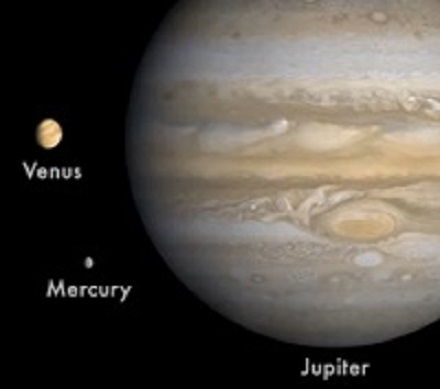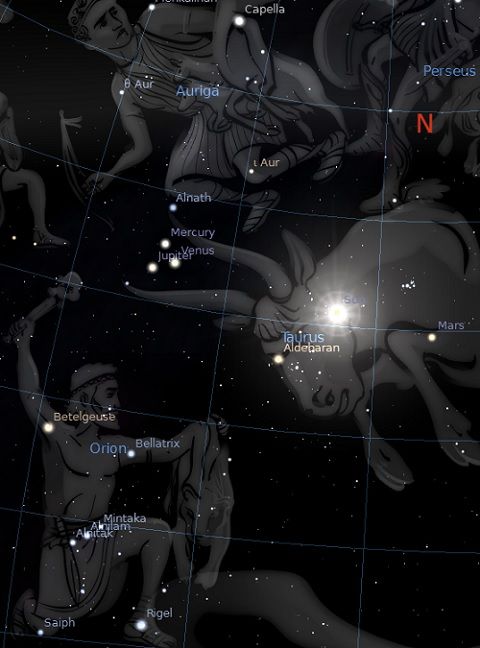

| Visitors Now: | |
| Total Visits: | |
| Total Stories: |

| Story Views | |
| Now: | |
| Last Hour: | |
| Last 24 Hours: | |
| Total: | |
Spectacular Triple Conjunctions of Planets Mercury, Venus, and Jupiter on May 26-27,2013 – In 43 Years this Wonder Again
Sunday, May 12, 2013 5:41
% of readers think this story is Fact. Add your two cents.
May 12, 2013
Spectacular Triple Conjunctions of Planets
Mercury, Venus, and Jupiter on May 26-27,2013 -
In 43 Years this Wonder Again
The sunset of May 26th will be extra special. On that date, Venus, Jupiter and Mercury will gather in the fading twilight to form a bright triangle only three degrees wide.
In 43 Years this Wonder Again. On February 27,2056
Follow the link to watch the video

A new ScienceCast video previews coming attractions in the sunset sky.
Triple Conjunctions of Planets are Fairly Rare. The last time it happened was in May 2011.
This triple is especially good because it involves the three brightest planets in May’s night sky: #1, Venus; #2, Jupiter; and #3, Mercury. The triangle will be visible even in places with heavy urban light pollution.
The best time to look is about 30 to 60 minutes after sunset. The three planets will be hugging the horizon, so a clear view of the western sky is essential.

image: NASA - The three planets to scale.
You don’t have to wait until May 26th to enjoy the show, however. The planets start gathering weeks earlier. Dates of special interest include:
May 11th through 13th, when the crescent Moon, Venus, and Jupiter form a long diagonal line jutting upward from the sunset;
May 23rd, when Jupiter and Venus converge to less than 5 degrees apart, close enough for simultaneous binocular viewing;
May 24th, when Mercury passes Venus less than 2 degrees away, giving shape to the triangle that reaches maximum compactness two nights later on May 26th.
The triangle begins to disperse on May 27th, but even then the show is not over. On May 28th, Venus passes Jupiter at a distance of 1 degree, forming a truly spectacular pair.
From beginning to end, the three naked-eye planets will be close enough to fit inside the field of ordinary binoculars from May 23rd until early June. May 26th is just the best among many very good nights.

Step outside, face west, and observe the planets. It’s a beautiful way to end the day.
Credits:
Author: Dr. Tony Phillips | Production editor: Dr. Tony Phillips | Credit: Science@NASA
Read more:


